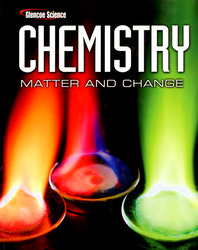1 A) 1.0 s B) 10 s C) 100 s D) 0.1 s 2 2 and B2 ?<a onClick="window.open('/olcweb/cgi/pluginpop.cgi?it=jpg::::/sites/dl/free/007874637x/514712/fig16_3.jpg','popWin', 'width=NaN,height=NaN,resizable,scrollbars');" href="#"><img valign="absmiddle" height="16" width="16" border="0" src="/olcweb/styles/shared/linkicons/image.gif"> (38.0K)</a> A) product B) reactant C) activated complex D) diatomic molecule 3 <a onClick="window.open('/olcweb/cgi/pluginpop.cgi?it=jpg::::/sites/dl/free/007874637x/514712/fig16_5.jpg','popWin', 'width=NaN,height=NaN,resizable,scrollbars');" href="#"><img valign="absmiddle" height="16" width="16" border="0" src="/olcweb/styles/shared/linkicons/image.gif"> (45.0K)</a> A) the energy released by a chemical reaction. B) the energy absorbed by a chemical reaction. C) the energy reacting particles must have to form the activated complex D) the energy produced by the combustion of the reactants 4 A) homogeneous catalyst B) heterogeneous catalyst C) solid-state catalyst D) ephemiral catalyst 5 A) speed up the reaction B) drive the reaction to completion C) raise the activation energy D) lower the activation energy 6 2 [C]3 A) 4 B) 5 C) 6 D) 7 7 A) by calculation B) by experimentation C) by trial and error D) by estimation 8 A) speed up B) slow down C) stop D) continue at the same rate 9 <a onClick="window.open('/olcweb/cgi/pluginpop.cgi?it=jpg::::/sites/dl/free/007874637x/514712/fig16_17.jpg','popWin', 'width=NaN,height=NaN,resizable,scrollbars');" href="#"><img valign="absmiddle" height="16" width="16" border="0" src="/olcweb/styles/shared/linkicons/image.gif"> (47.0K)</a> A) the rate increases B) the rate decreases C) the rate stays the same D) the rate doubles 10 <a onClick="window.open('/olcweb/cgi/pluginpop.cgi?it=jpg::::/sites/dl/free/007874637x/514712/fig16_20.jpg','popWin', 'width=NaN,height=NaN,resizable,scrollbars');" href="#"><img valign="absmiddle" height="16" width="16" border="0" src="/olcweb/styles/shared/linkicons/image.gif"> (45.0K)</a> A) NO and H2 B) N2 O2 and H2 C) N2 O2 and H2 O D) N2 O2 , H2 O and H2





